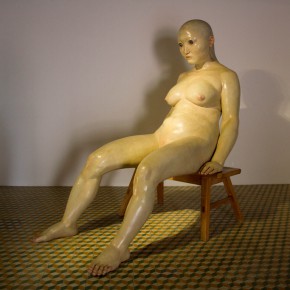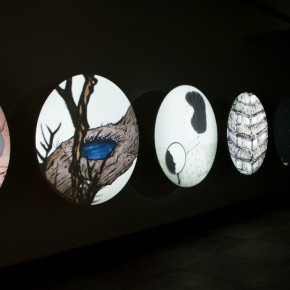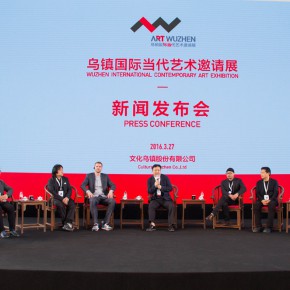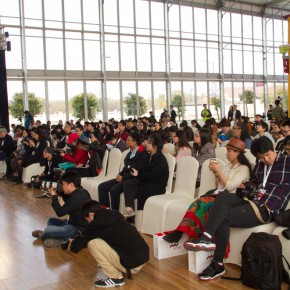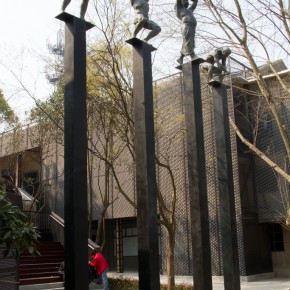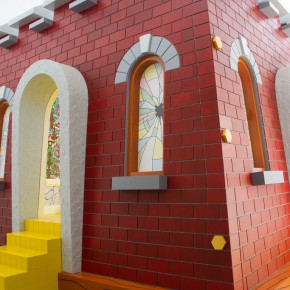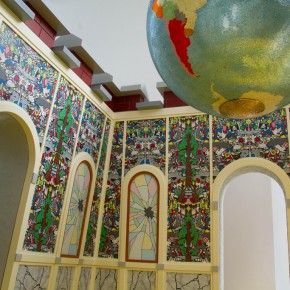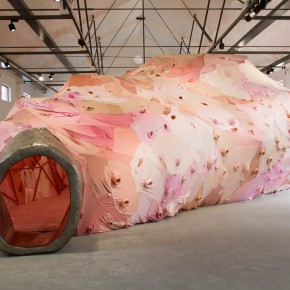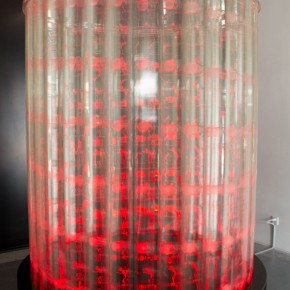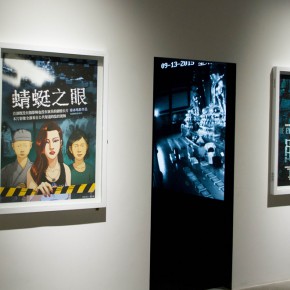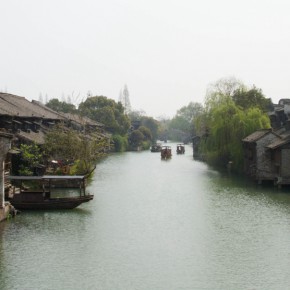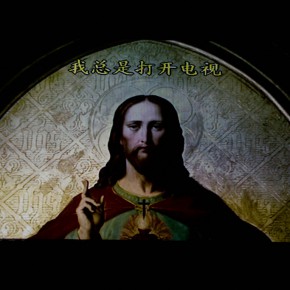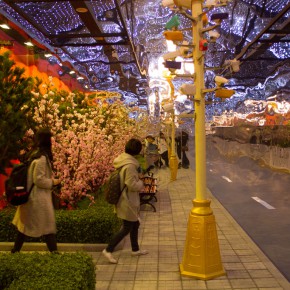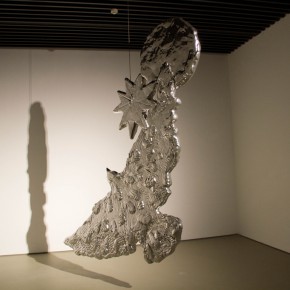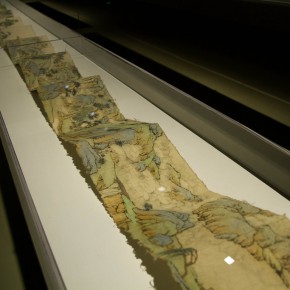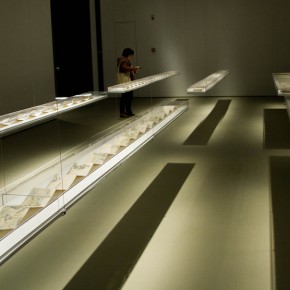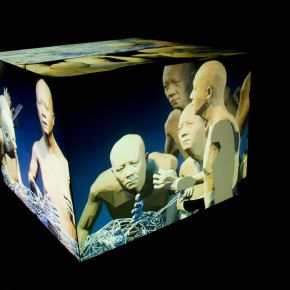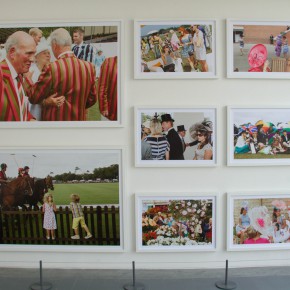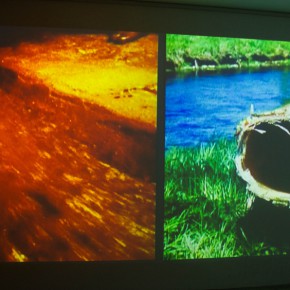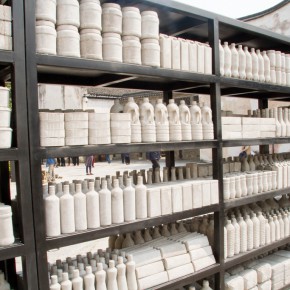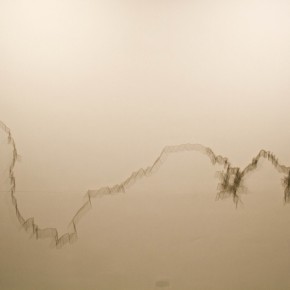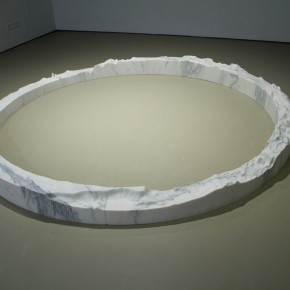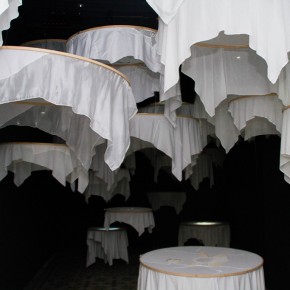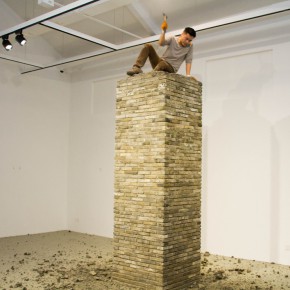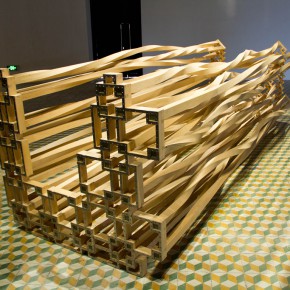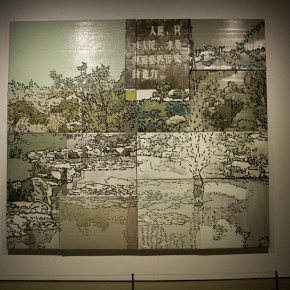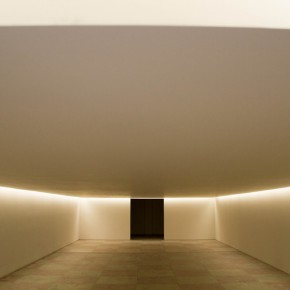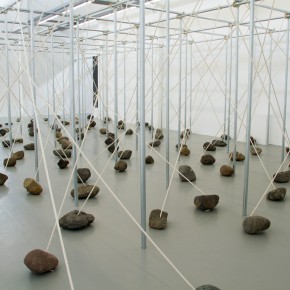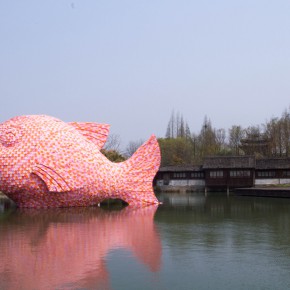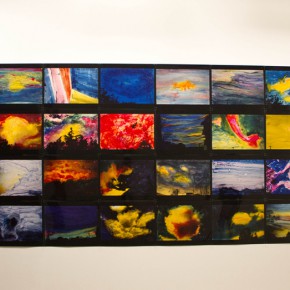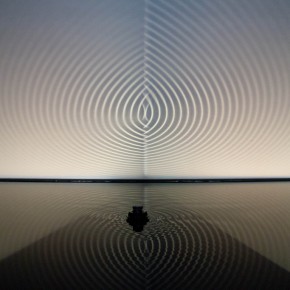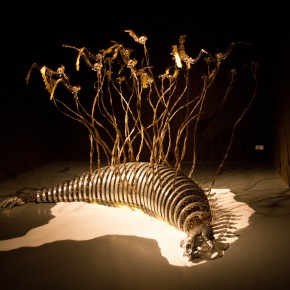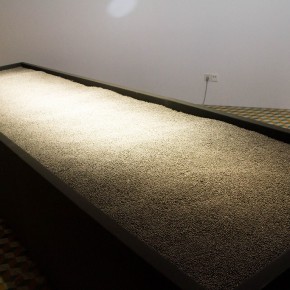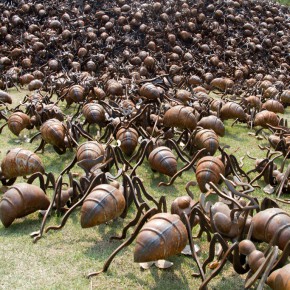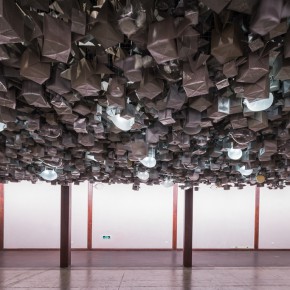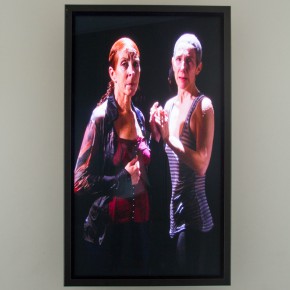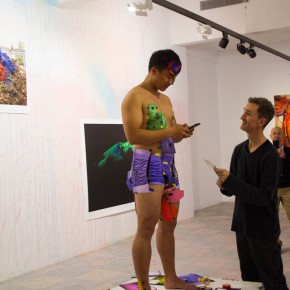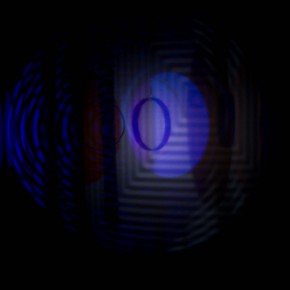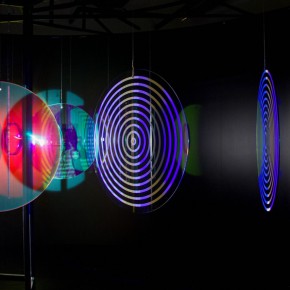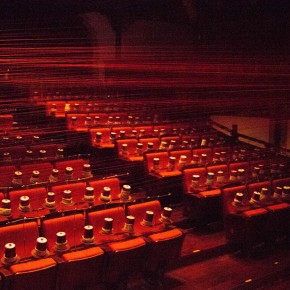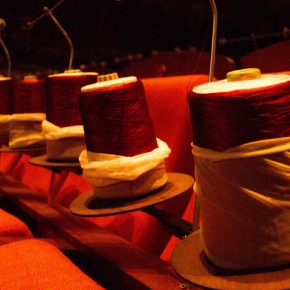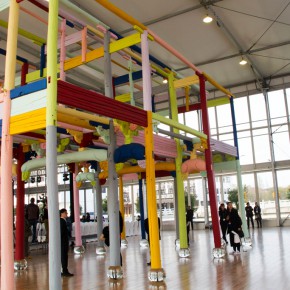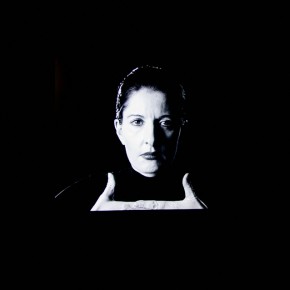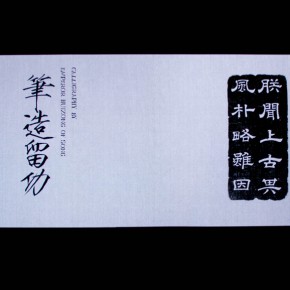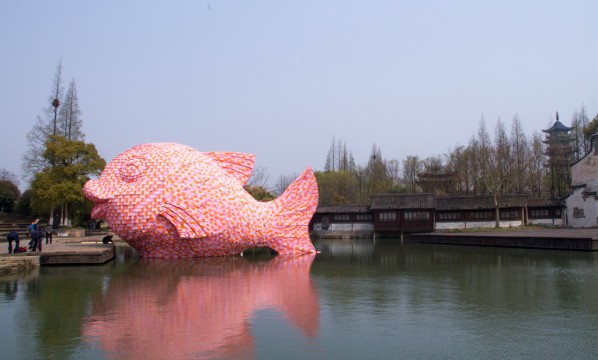
Utopia is a place where there is no real place, a place that is hidden from direct or reverse relationships and no real sense of space in society; in all cultures and civilizations, there might also be real spaces, and these real spaces are like the things of inverse space, an indeed realizable utopia... Compared with a utopia, I call them heterotopia.
–Michel Foucault
On March 27, 2016, after having been prepared for over one year, “Utopias/Heterotopias: Wuzhen International Contemporary Art Exhibition” was unveiled in the North Silk Factory in Wuzhen, it is such a fabulous contemporary art show with the artistic focus being seemingly thrown to this little town in Jiangnan, instead of Hong Kong that the local dignitaries, educational experts, big collectors, and the media gathered and witnessed the show. The exhibition is organized by Cultural Wuzhen Co., Ltd., initiated by the exhibition chair Chen Xianghong and developed by chief curator Feng Boyi and curators Wang Xiaosong and Liu Gang, to feature a total of 34 (groups of) artists with 130 pieces of work in 55 groups (sets), in a wide range of contemporary media such as installation, performance, sculpture, sound, video, and animation. It is amazing for the public to watach the works by the renowned artists such as Damien Hirst, Marina Abramovic, Xu Bing, Ai Weiwei, Araki Nobuyoshi, Florentijn Hofman…
The exhibition is themed on different and superimposed ideas of “Utopias/Heterotopias”, and 12 artists specially inspected Wuzhen for this creation, it is obvious that the show aims at distantly and horizontally viewing and grasping the culture, the ideal and reality of life. According to the interpretation of the chief curator Feng Boyi, “utopia” is people’s expectation given for an ideal society and is virtual to present a perfect social form, this is a spiritually existing way for people’s history and becomes one of the main powers to change reality, open up the future and even become a radical and revolutionary power.
The waterside illustrations of Wu Zhen with more than one thousand years of history, filled with black and white walls, small bridges and rivers, swaying boats with black awnings, oblique bamboo in the shadow of the moon and it is full of a gentle fragrance of books, this is a typical traditional Chinese literati residential environment, it is also a distant utopia for the contemporary Chinese culture. Since 1999, Wuzhen began the protection and development of the old town, built a cultural brand, the helmsman of Cultural Wuzhen Co., Ltd. and the project initiator Chen Xianghong said, the creation of “Cultural Wuzhen” requires “the preservation and continuation of traditional culture,” and “the introduction of new cultural elements, both of which should be integrated into each other.” Today, tourist buses drive into the town, after a short-lived all consuming experience, the visitors return to true reality. For our life and culture, Wuzhen verifies a kind of beautiful imagination and it is both true and utopian.
Seen from the works of “Wuzhen International Contemporary Art Exhibition”, a lot of works also explain the presentation of “utopia-heterotopia” in contemporary culture. Mao Tongqiang’s large-scale installation collects more than thirty thousand used hammers and sickles and there are also tools we have used, part of our life memory and also a symbol of communist utopia. Reality and ideology, life and history, the work undoubtedly opens our new imagination of the utopia-heterotopia form. Xu Bing directs a new film entitled “The Eyes of the Dragonfly”, the use of the reality of life to replace the reality of the film with surveillance cameras, which confirms the true possibility of “The Truman Show”, and also confirms the “panopticon” put forward by Jeremy Bentham as it really exists in the modern society, we are chasing the goodness of utopia, but gain the real fruit of heterotopia, and we also more and more depend on reality. Song dong’s “Street Plaza” heterogeneously builds an irony that is mixed and open “Beijing Street”, although it has a lack of the sense of reality, it is like a real place in utopia. Dutch artist John Körmeling creates a mechanical installation within the scenic area, while standing on it, the audience will have a sense of transferring and dislocation from the utopian space to heterotopia space, so perhaps it is the true territory of the two states.
The exhibition is on display in Wuzhen, but it is not the usual semantically “Wuzhen”, referring to Wuzhen, it usually refers to the West Scenic District, although 7 pieces (sets) of works are located everywhere in the West Scenic District, such as Florentijn Hofman’s “The Afloat Fish”, Chen Zhiguang’s “Ants”, Antti Laitinen’s “Armor of Tree”, the majority of the works are located in the North Silk Factory. The abandoned factory in the post-industrial era was transformed into a contemporary art exhibition space by the “Speed of Wuzhen”, which is one of the most familiar cases of the birth of art spaces in the modern world and China. Although it is only one step away from the North Silk Factory and the West Scenic District, one side has an ancient cultural feeling, while the other side is the daily life of the heavy traffic on the street, which is like separating theutopia from the heterotopia”.
Wuzhen’s show is certainly held in “Wuzhen”, on the one hand, the scenic spot is crowded by tourists, so there are a large number audience visiting the exhibition, and in this we-media era, everyone is addicted to the function of the self-timer, so the promotion is free from worry. On the other hand, pulling down the art from the altar, the art fuses and interacts with mass culture, paying attention to the relationship with the audience, which is also an aesthetic context developed since the introduction of modern art. In addition, in terms of the choice of the exhibited works, the exhibition refuses to choose the arcane avant-garde works which are able to lead to an academic debate, but the majority of the works combine the popular, public, fun and interactive characteristic, suggesting the exhibition “meets” the public and tourists to some extent. In exhibition media, much of the media also focuses on this topic, the organizer of the exhibition hasits own concerns and difficulties, in addition to the indoor display of videos and easel paintings, the works of sculpture and installation are located in the tourism spots, so the security of work is really a big problem, while there are also many difficulties diverting the communication to the artists. Feng Boyi has said many times that they thought many foreign artists had an obsessive-compulsive disorder because of the differences of institutional regulations and cultural characters, for example, Damien Hirst presented his silkscreens of “The Last Supper Series” together with 35 pages of security protocol. There are many particular cases also contributing to the coexistence of a two-way world of the artistic utopia and heterotopia in Wuzhen.
It is a utopia and also a heterotopia. Wuzhen focuses on the development of contemporary art, and the practice of industrial art exploration which has its unique advantages. Feng Boyi teased that “the biggest advantage of Wuzhen is that it is rich”, of course, Wuzhen has cultural feelings since this security protection and development, in addition, it has cultivated a team and accumulated experiences with Wuzhen International Drama Festival, which also has advantages for Wuzhen in holding a contemporary art exhibition. As for the future development vision of “Wuzhen International Contemporary Art Exhibition”, Chen Xianghong did not reply clearly to the question put foward by the media, but said that he hoped Wuzhen could successfully build a “spring” depending on the best advantage.
Text and photo by Zhang Wenzhi/CAFA ART INFO
Translated by Chen Peihua and edited by Sue/CAFA ART INFO
About Utopias/Heterotopias—Wuzhen International Contemporary Art Exhibition
Organizer: Cultural Wuzhen Co., Ltd.
Opening: March 27, 2016
Dates: March 28 - June 26, 2016
Venues: North Silk Factory and West Scenic Zone, Wuzhen, China
Artists: Marina Abramovic, Ai Weiwei, Araki Nobuyoshi, Chen Zhiguang, Cheng Dapeng, Choe U-Ram, Richard Deacon, Olafur Eliasson, Ann Hamilton, Oliver Herring, Damien Hirst, Florentijn Hofman, Studio Job, Kishio Suga, John Körmeling, Lai Chih-Sheng, Antti Laitinen, Li Songsong, Li Binyuan, Jaffa Lam, Maya Lin, Liu Jianhua, Mao Tongqiang, Miao Xiaochun, Martin Parr, Peng Wei, Finnbogi Pétursson, Pinaree Sanpitak, Roman Signer, Kiki Smith, Song Dong, Sui Jianguo, Bill Viola, Weng Yunpeng, Wu Junyong, Xiang Jing, Xu Bing, Xu Zhongmin, Yin Xiuzhen, Zhang Dali
Exhibition Advisory Committee: Hou Hanru, Leng Lin, Alexandra Munroe, Uli Sigg, Philip Tinari, Wu Hong, Zhang Zikang
Chairman of the Exhibition: Chen Xianghong
Chief Curator: Feng Boyi
Curators: Wang Xiaosong, Liu Gang
Curatorial Assistants: Lu Xin, Zhang Fan, Miao Yu, Yang Yang, Chen Minghua, Sun Zhiyong
Coordinators: Chen Yu, He Guoming, Cao Yangdong, Yao Jianqiang, Sophie Yu, Renee Xu, Ying Zhu
Courtesy of the artists and Cultural Wuzhen Co., Ltd.


